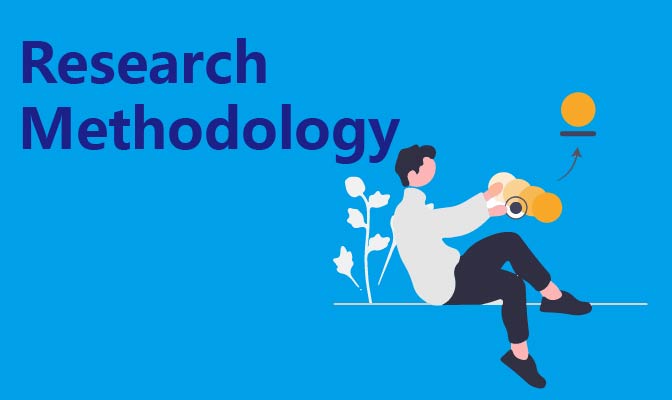In foreign countries not only to apply for research masters need to write a paper, a lot of lectures also need to complete a variety of essay assignments, coupled with the British education for the paper’s assessment standards are quite strict and harsh, so if they are still not clear about the difference between Research Methodology and research method, I’m afraid it is difficult to be able to graduate in the United Kingdom successfully!
Hearing this, a lot of treasures are afraid to cry in the toilet! I’m not going to be able to do that! Let’s finish reading this note first.
Structure: What are the parts of Methodology?
1.Introduction
The introduction is a summary paragraph, in which you need to outline what the Methodology consists of.
For example, research design, data collection methods, data analysis methods, sample selection and so on.
For example.
This chapter consists of five parts, which are research questions, research participants, research methods, research process, and data analysis.
2. Introduce the theoretical foundation of research philosophy
(Research Philosophy) Philosophy includes positivism, interpretivism, and post positivism.
‘Positivism is the use of facts and rigorous data analysis to test conclusions or hypotheses, and is generally used in thesis writing in natural sciences such as business. Quantitative quantitative analysis is required.
Interpretivism is generally used in liberal arts sciences such as humanities and social sciences, and requires the use of qualitative qualitative analysis. Interview and focus group are used to study and discuss a phenomenon or object of study, and then draw conclusions.
. Post positivism is generally a summary of the objective world by subjective experience. In this case both quantitative and qualitative analyses are used.
The research approach used, the reasons for its use, and its advantages and disadvantages are also described here.
3.Introduction to Research Design (Research Design)
. Qualitative Research (Qualitative Research) refers to the inductive process of making inferences based on the accumulation of facts in a natural situation by continuously collecting and accumulating facts to discover theoretical results. Common research methods include ethnography, focus groups, in-depth interviews, participatory observation, case studies, and case studies interviews, participatory observation, and case studies.
Quantitative Research
Quantitative Research refers to the process of describing, interpreting and predicting the research object on the basis of a large number of quantitative facts, and putting forward theoretical views through logical inference and relevant analyses.
Commonly used methods are content analysis, questionnaire survey method, experimental method.
. Mixed research is the use of both qualitative and quantitative research.
Whether using Qualitative, Quantitative or Mixed methods, the choice of research approach here needs to be consistent with Philosophy, explaining why qualitative, quantitative or mixed methods are used and why these methods answer the research question.
4. Introduction to Instruments for Data Collection
(Instruments for Data Collection)
This section describes in detail the source of the data, whether it is primarydata (data obtained through surveys) or secondary data (company annual reports, stock data, bond data, etc.), and describes the specific methodology used to collect the data, including the reasons for choosing the methodology, its advantages, and its limitations. You may also refer to the literature for selected data sources, paying attention to the authority and validity of the data. Various databases such as statistical yearbook, WIEN, and more authoritative social surveys such as China Social Survey CSs, China General Social Survey cGss are also important data collection channels.
5. Introduce the research samples (Sampling) and participants (ResearchParticipants).
Whether it is quantitative research or qualitative research, can not be all of a research object included in the study, so the need for sampling, quantitative research follows the principle of randomness, qualitative research follows the principle of representative sampling. In these sections, it is necessary to describe whether sample sampling is random or non-random. It is also important to give details about the selection of subjects or participants and the reasons for the selection, including basic information such as the time, place, name and sample size of the study.
A rigorous research methodology is essential for a dissertation to get high marks.
Methodology accounts for about 20% of the Dissertation, which is an important part of the thesis and determines the direction of the thesis, and at the same time, it is also a difficult point in the thesis.
Methodology is methodology, theo-retical framework used to support specific research methods. Methodology is more macroscopic, including the methods used in the field of research and the theories or principles behind them, which will influence the choice of specific research methods. The Research Question and Research Hypothesis determine the choice of our methodology.
Methodology
Research Methods (Research Methods) refers to the specific methods used to collect data, in order to answer the research question, to achieve the objectives of the research, we can through different methods (methods) to collect data (data). Specific methods include interview, questionnaire, observation. Content analysis, focusgroups, experiments and so on.
Based on existing literature and research, describing the academic rationale for the choice of methodology and research methodology enhances the reliability and validity of the study, and also presents the reader with a clear picture of what the study did and how it was done, which is what the Methodology part is addressing.




